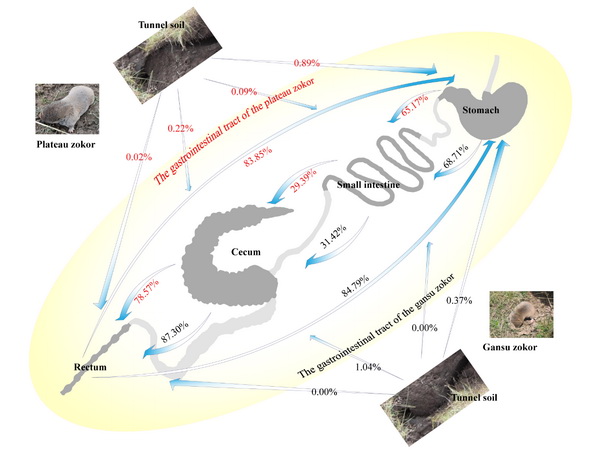In this study, based on high-throughput sequencing technology, the biodiversity and the community structure of microbiota in different GIT segments (the stomach, small intestine, cecum and rectum) of plateau zokors and Gansu zokors were studied and compared. A source tracking analysis for the microbial communities of different GIT segments was carried out using the fast expectation–maximization microbial source tracking (FEAST) method. We found that, for both species, the microbial community richness and diversity of the small intestine were almost the lowest while those of the cecum were the highest among the four segments of the GIT. Beta diversity analyses revealed that the bacterial community structures of different GIT segments were significantly different. As for the comparison between species, the bacterial community compositions of the whole GIT, as well as for each segment, were all significantly different. Source tracking conducted on both zokors indicated that the soil has little effect on the bacterial community of the GIT. A fairly high percentage of rectum source for the bacterial community of the stomach indicated that both zokors may engage in coprophagy.

Figure 5 This is an open access article distributed under the Creative Commons Attribution License which permits unrestricted use, distribution, and reproduction in any medium, provided the original work is properly cited
This result was published in Animals with the title of “Nitrogen addition, rather than altered precipitation, stimulates nitrous oxide emissions in an alpine steppe”.
The link below will guide you to the reading:
https://doi.org/10.3390/ani11113297
